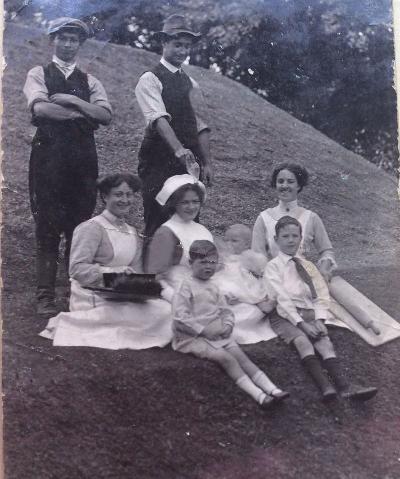The Production of Books in England, 1350-1500, edited by Alexandra Gillespie and Daniel Wakelin, Cambridge 2001, p160
Proceedings of the Cambridge Antiquarian Society, October 1902 to May 1903, No. 44, Cambridge 1904, p303
September 1418 Geoffrey Attewey, a servant born on the Bishop's manor of Ashburton, received his manumission (freedom) on Sept 2nd, signed and sealed by the Dean and Chapter on the 3rd.
A year after their marriage a Charles Gordon Sprague (presumably the same one) was admitted to the Camberwell H asylum in Surrey on March 7th 1864. He was discharged on April 4th, but readmitted on the 5th, and again on June 17th.
UK Lunacy Patients Admission Registers 1846-1912
The new Mrs Sprague had returned to her parents, but Charles then came to stay, and it is then that the family, including their servant Mary Jane Pidgeon, became exceedingly ill. The cause was established as a rabbit pie, and there were suspicious circumstances.
Mary Jane Pidgeon, the servant who was both a victim, and a witness in the case, was the daughter of John Pidgeon, who in 1861 had been living with his wife and family at the Golden Lion Tap in East Street.
They had a servant, Sarah Eales, aged 14.
1871 census RG10, piece no 2080, folio 31, p13
Western Times 21 June 1887, p2, col5
Exeter and Plymouth Gazette 24 June 1887 p3, col1
*Mentions of family members suggest this is in fact Chuley House.
The men are unidentified; but if the female servants are the same as on the 1911 census, they are (order unknown):
Daisy Furneaux Barden, housemaid; Alice Lilian Anning, nurse; and Olive Hart, cook.

1911 census RG14, piece no. 12725
Many thanks to Richard and Frances Berry for this photograph and information
In 1923 Mrs John Godden of Holne Cross was looking for staff: she required a cook, a parlourmaid, a housemaid, a house-parlourmaid and a kitchenmaid.
Later the same month she was looking for a Naval Pensioner, aged 45-50, to become a butler.
Western Morning News 10 February 1923 p10 col2
Western Morning News 23 February 1923 p8 col2
Western Morning News 17 November 1927, p6 col3